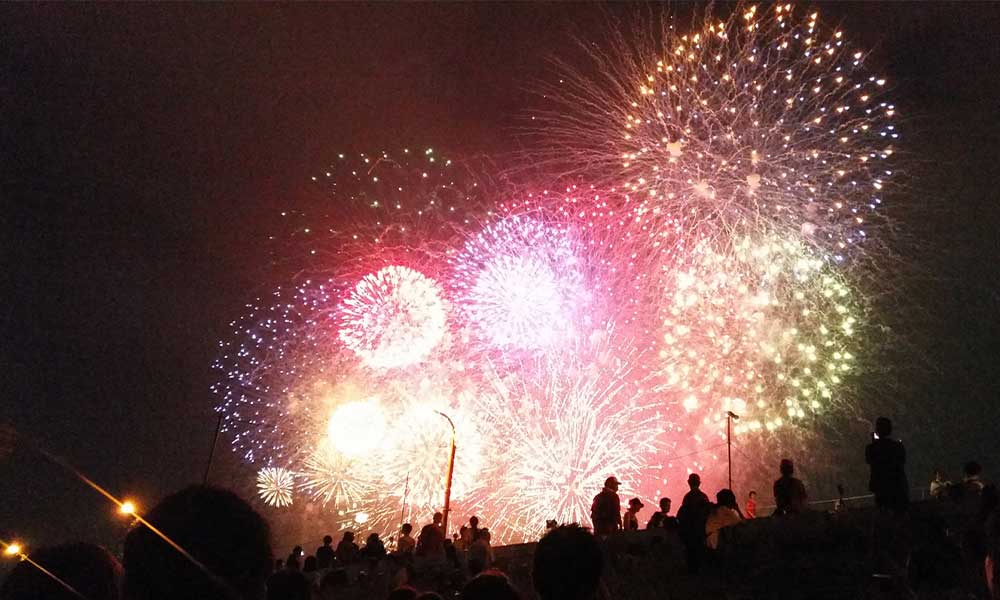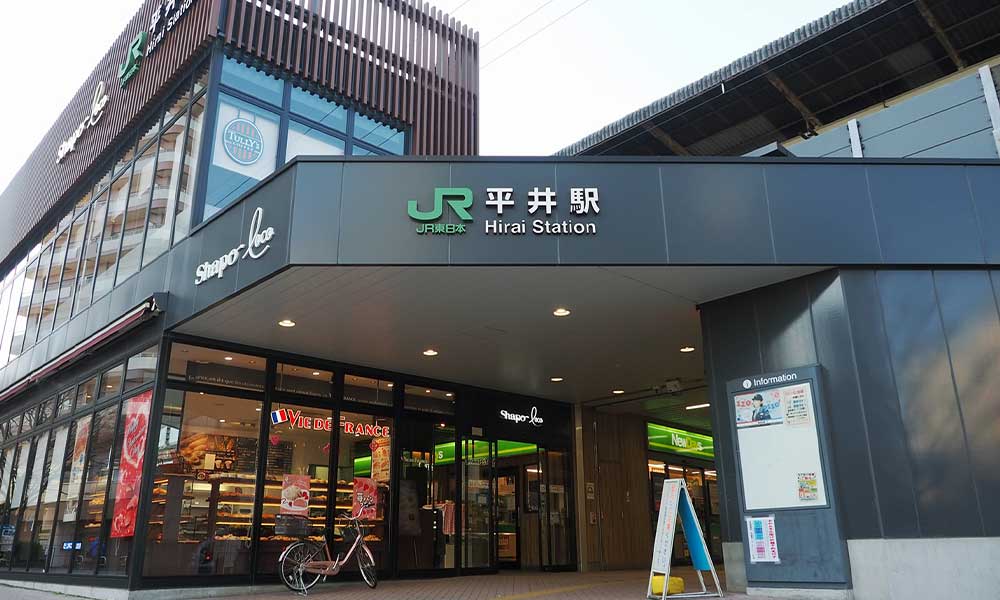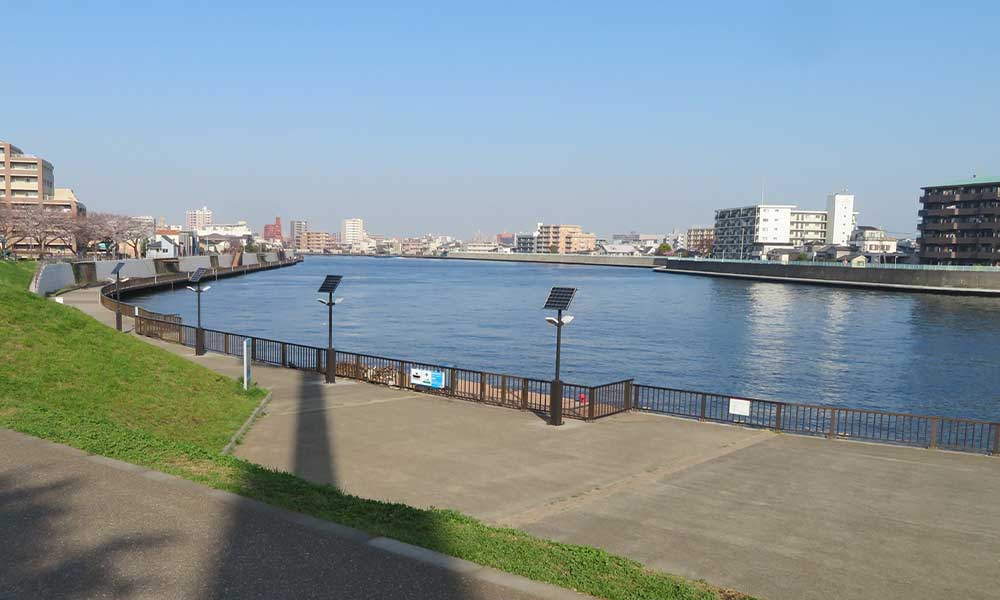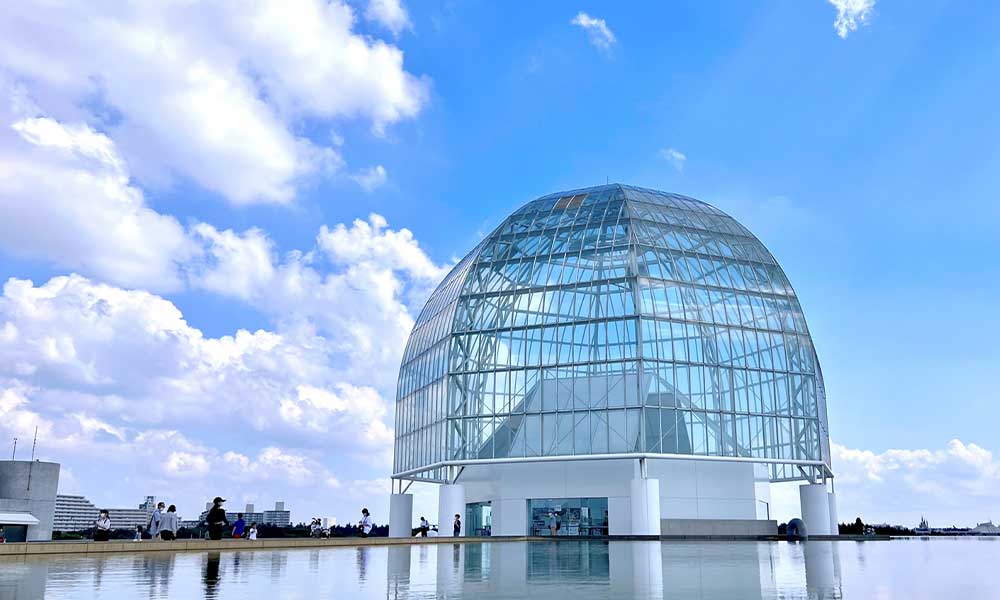Edogawa Ward, Tokyo東京都江戸川区
Living in Edogawa Ward, Tokyo
We have Summarized the livability of Edogawa Ward, Tokyo.
23 WARD AREA23区地域
-
- CHIYODA WARD 千代田区
-
- CHUOU WARD 中央区
-
- MINATO WARD 港区
-
- SHINJYUKU WARD 新宿区
-
- BUNKYO WARD 文京区
-
- TAITO WARD 台東区
-
- SUMIDA WARD 墨田区
-
- KOTO WARD 江東区
-
- SHINAGAWA WARD 品川区
-
- MEGURO WARD 目黒区
-
- OTA WARD 大田区
-
- SETAGAYA WARD 世田谷区
-
- SHIBUYA WARD 渋谷区
-
- NAKANO WARD 中野区
-
- SUGINAMI WARD 杉並区
-
- TOSHIMA WARD 豊島区
-
- KITA WARD 北区
-
- ARAKAWA WARD 荒川区
-
- ITABASHI WARD 板橋区
-
- NERIMA WARD 練馬区
-
- ADACHI WARD 足立区
-
- KATSUSHIKA WARD 葛飾区
-
- EDOGAWA WARD 江戸川区
CONTENTS
- What kind of place is Edogawa Ward, Tokyo?
- Edogawa WardPR video
- How is the traffic situation in Edogawa Ward?
- How are the rent and land prices in Edogawa Ward?
- How is childcare and education in Edogawa Ward?
- How about shopping in Edogawa Ward?
- How about jobs and recruitment in Edogawa Ward?
- Edogawa Ward’s unique subsidy/subsidy system
What kind of place is Edogawa Ward, Tokyo?

Edogawa Ward is a fun place to live near the sea and enjoy aquariums and theme parks.
Edogawa Ward is located in the eastern part of Tokyo’s 23 wards, with an area of approximately 49.9 square kilometers.
It is bordered by Katsushika Ward to the north, Urayasu City, Ichikawa City, and Matsudo City in Chiba Prefecture to the east, Tokyo Bay to the south, and Sumida Ward and Koto Ward to the west.
It has a population of approximately 688,000 and approximately 350,000 households. (As of April 2023)
The Arakawa River and Edogawa Ward run through the ward, and it is a long, narrow area that stretches from north to south, with most of the land lying at 0 meters above sea level.
Since the Edo period, the ward has been a bustling area with people passing through it, with roads such as the Motosakura Road and Iwatsuki Road. In addition, Edogawa and Shinkawa were bustling with boats carrying luggage and passengers.
Although the population gradually began to increase from the Meiji period to the Taisho period, the ward suffered great damage, such as the disappearance of the Hirai Komatsugawa area during the Pacific War’s air raids.
After that, in the Showa era, the population rapidly increased due to infrastructure development such as the opening of the Tozai Line.
Then, in 1932, Koiwa, Matsue, Komatsugawa Town, Kamoto, Shinozaki, Mizue, and Kasai Village were merged to form Edogawa Ward.
Today, Edogawa Ward is known as one of the leading commuter towns in Tokyo, with excellent access to Tokyo and Chiba Prefecture.
It is also famous as a town with a thriving agricultural industry, and produces a large amount of komatsuna, which has been in the ward since the Edo period.
It is said that the place where komatsuna originated is a place called “Komatsugawa”, and the name of komatsuna is taken from the place name.
There is no central station in the ward, but it is an area where unique towns gather, such as the area around Koiwa Station, which is bustling with many shopping streets such as “Sunroad Shopping Street” and “Showa Street Shopping Street”, and the area around Kasai Station, where “Ario Kasai” and “Subway Museum” are located.
The south side of the ward faces Tokyo Bay and is home to the large Kasai Rinkai Park, which is home to a large Ferris wheel, an aquarium, and a hotel. The area is also home to the hugely popular theme park Tokyo Disney Resort in Urayasu City, Chiba Prefecture, making the entire area a popular tourist spot.
The ward’s signature event is the Edogawa Fireworks Festival, which takes place every August.
This fireworks festival, held on the Edogawa riverbed, is a large-scale event held in conjunction with the Ichikawa City Summer Fireworks Festival, held across the river in neighboring Ichikawa City. With a total of 14,000 fireworks, it is one of the largest in Japan, and attracts many tourists every year.
PR video of Edogawa Ward, Tokyo
Edogawa City: A city where everyone can live in peace and harmony
How is the traffic situation in Edogawa Ward?

Edogawa Ward does not have a large terminal station, but has a good subway and bus network.
Edogawa ward has 5 train lines and 11 stations.
| Funabori Station | Toei Shinjuku Line |
| Nishikasai Station | Tokyo Metro Tozai Line |
| Kasai Rinkai Park Station | JR Keiyo Line |
| Kasai Station | Tokyo Metro Tozai Line |
| Hirai Station | JR Sobu Line |
| Keisei Koiwa Station | Keisei Main Line |
| Koiwa Station | JR Sobu Line |
| Mizue Station | Toei Shinjuku Line |
| Ichinoe Station | Toei Shinjuku Line |
| Shinozaki Station | Toei Shinjuku Line |
| Edogawa Station | Keisei Main Line |
Bus routes include Toei Bus, Keisei Bus, and Keisei Town Bus.
There are also express buses that will take you to various places, such as Haneda Airport, Narita Airport, Disney Resort, and Tokyo Skytree.
There are also water buses that can be used to take advantage of the waterside terrain, and if you use the Tokyo Waterfront Line operated by the Tokyo Metropolitan Park Association, you can access places like Asakusa and Odaiba.
There are four expressways accessible from the ward, with six entrances and exits.
| Metropolitan Expressway Route 7 Komatsugawa Line | Komatsugawa Entrance・Ichinoe Entrance・Shinozaki Entrance |
| Metropolitan Expressway Central Circular Route | Seishincho Entrance・Funaboribashi Entrance/Exit |
| Keiyo Road | Shinozaki Entrance/Exit |
| Shuto Expressway Bayshore Line | Kasai Entrance |
Roads that pass through the ward include National Route 14, which runs from Chuo Ward, Tokyo to Chiba City, Chiba Prefecture, and National Route 357, which runs from Chuo Ward, Chiba City, Chiba Prefecture to Yokosuka City, Kanagawa Prefecture.
Since the area is somewhat far from the city center, traffic congestion is rare and travelling by car or bus is easy.
Residential areas and shopping districts can be far from stations, making it difficult to get around on foot.
How are the rent and land prices in Edogawa Ward?

Edogawa Ward is a popular city among students and families with children, with relatively reasonable prices within the 23 wards.
According to information from a real estate information website, the average rent in the ward for a newly built apartment within a 10-minute walk from the station is about 82,000 yen for a 1K and 123,000 yen for a 2DK.
The average land price is about 1.41 million yen per tsubo.
The average price of a newly built apartment is 54,910,000 yen, the average area is 69.59 m2, and the average price per tsubo is 2,608,000 yen per tsubo. (As of 2018-2022)
Edogawa Ward is one of the relatively easy-to-live-in areas in Tokyo, and is a popular commuter town.
There are many relatively quiet residential areas, so you can live in a calm environment.
In addition, since it is somewhat far from the city center, the average rent is relatively cheap and you can find a large room.
In recent years, the construction of condominiums has progressed, and the number of new houses is increasing.
On the other hand, many old-fashioned wooden houses remain, and there are places where you can enjoy a retro atmosphere.
There are many areas surrounded by rivers and greenery, so you can live in a relatively quiet residential area.
Residential areas and shopping districts can be far from stations, making it difficult to get around on foot.
How is childcare and education in Edogawa Ward?

Edogawa Ward: A city with many nurseries and generous child-rearing support
Edogawa ward has 100 nurseries, 43 kindergartens, 71 elementary schools, 35 junior high schools, 10 high schools, 2 junior colleges/universities, and 14 vocational schools.
The Child Medical Expense Subsidy System covers children under 18 years old (as of March 31 after they reach 18 years old) for both outpatient and inpatient care, and fully subsidizes all medical expenses.
Child allowances are provided: 15,000 yen for children under 3 years old, 10,000 yen for the first and second children aged 3 years old or older and not yet entering elementary school, 15,000 yen for the third child and onwards, and 10,000 yen for junior high school students.
Edogawa Ward also offers a wide range of unique support.
The “Childbirth and Childrearing Support Gift” is a great support system where you can receive cash or gift points if you receive an interview or a newborn visit after registering your pregnancy or birth.
The “Postpartum Care” service includes both overnight and home visit services, and you can consult with specialized staff about baby and mother care and childcare at a low price.
The childrearing support app “Piyonavi Edogawa” is a convenient app that allows you to record your child’s growth, manage vaccination schedules, and apply for newborn visits.
The “Sukusuku School” system allows elementary school students to use school facilities to study and play after school or on holidays. This system is basically free to use as long as you register.
In addition, there is also “after-school care” which can be used for a fee when parents are away from home for work or other reasons. This system not only provides a place for children to play and learn after school, but also leads to safety and security.
Edogawa ward has a rich educational environment with many public kindergartens, elementary schools, and junior high schools, as well as many private schools. There are also many preparatory schools, and the ward has an educational environment that considers children’s futures.
In addition, there are many nursery schools, child-rearing support centers, and children’s halls, so parents and children raising children can receive a variety of support.
There are also many lush parks and playgrounds, and the ward has an environment where children can play freely, making it a good place to raise children.
There are many public elementary and junior high schools, as well as many private schools, so there is a wide range of educational environments. There are also many schools with preparatory schools and distinctive educational programs, so children can choose the learning that suits them best for their future.
There are also many facilities such as learning support centers, cram schools, and college entrance guidance, so children can improve their academic abilities and skills.
Edogawa ward has a rich educational situation, and it can be said that it has an environment where children can choose the learning that suits them best for their future.
There is ample child-rearing support and subsidies available, making it an easy environment to raise children in.
Popular schools can be difficult to get into as they have a higher admissions rate.
How about shopping in Edogawa Ward?

Edogawa Ward is a city with many supermarkets and other shops that are essential to daily life.
Edogawa Ward has a relatively large number of residential areas, and tends to have fewer commercial facilities than other wards in Tokyo. However, there are shopping malls and shopping streets around major stations, where you can get the daily necessities and food you need.
For example, around Kasai Station, there are commercial facilities such as Ario Kasai and Patria Kasai, which offer a wide variety of products, including fashion, food, and miscellaneous goods.
There are also many daily necessities stores such as supermarkets, convenience stores, and drugstores in front of the station, so you can get the things you need for daily life relatively easily.
There are about 115 supermarkets, mainly Summit, Seiyu, and Maruetsu.
There are few large commercial facilities, but there are supermarkets and drugstores in front of the station, so you will have no trouble buying daily necessities.
Because there are many residential areas, there tend to be fewer commercial facilities than in other wards. Commercial facilities are mainly concentrated around stations, so places suitable for shopping may be limited in other areas.
How about jobs and recruitment in Edogawa Ward?
Edogawa Ward: A city where you can find a wide range of industries, from manufacturing to theme parks
The average annual salary in Edogawa Ward is 3.93 million yen.
Edogawa Ward has a relatively large number of residential areas, and there are fewer commercial facilities than in other wards in Tokyo. However, it has good access to central Tokyo, and many companies are located around major stations, so there are a lot of job openings.
There are companies in a variety of industries, including manufacturing, medical and welfare, services, retail, and food and beverage. Edogawa Ward is also close to Tokyo Disney Resort, and there are many job openings related to these.
There are job openings in a variety of industries, including automobile parts manufacturers and electronic parts manufacturers in the manufacturing industry, hospitals and nursing care facilities in the medical and welfare industry, real estate and hotels in the service industry, supermarkets and convenience stores in the retail industry, and restaurants and cafes in the food and beverage industry.
Because of its good access to central Tokyo, there tends to be a relatively large number of job openings.
Because there are many residential areas, store space may be limited, and the working environment and benefits may be less favorable than in other areas.
Edogawa Ward, Tokyo’s unique subsidy/subsidy system
Edogawa Ward, Tokyo’s unique housing assistance and subsidy system
Edogawa Ward, Tokyo’s unique childcare support system
Edogawa Ward, Tokyo’s unique system for further education and tuition assistance/subsidies
| School support School support expenses: Payment of school supplies for new students before they enroll Educational Expense Subsidy System and Scholarships |
























